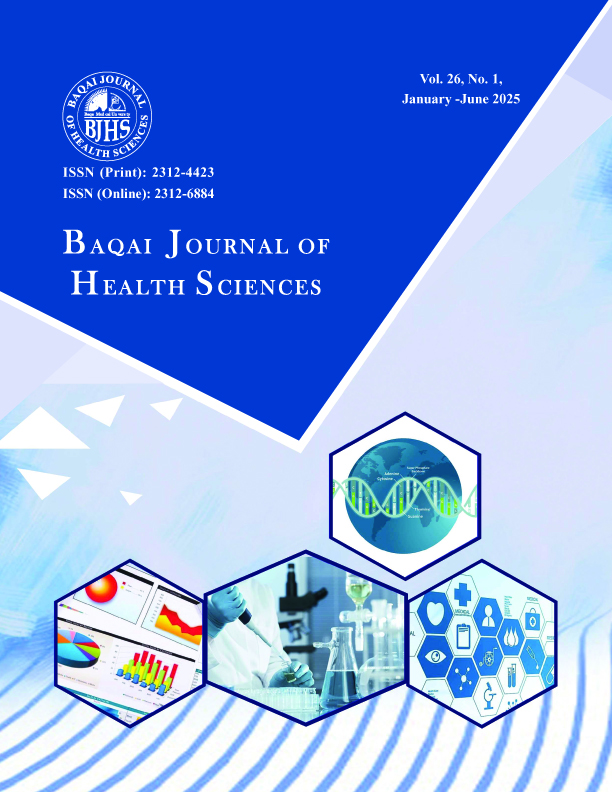SERO PREVALENCE OF HIV, HCV, HBV AND SYPHILIS (VRDL) IN TRANSGENDER MALE SEX WORKERS FROM RURAL, URBAN SINDH AND PUNJAB, PAKISTAN
DOI:
https://doi.org/10.63735/baqa.v26i1.14-21Keywords:
Sexually Transmitted Infections (STIs), Human Immunodeficiency Virus (HIV), Hepatitis B virus (HBV) & Hepatitis C virus (HCV), Syphilis, Transgender Male Sex Workers (TGMSW)Abstract
Objectives: Sexually transmitted infections (STIs) are among the most important health concerns in sex workers and the related key population because of the interaction of this community with general population and their spouses, as this group acts as a bridge between themselves and the people they come in intimate contact with. In Pakistan it can impact more profoundly because of lower literacy rate, poor personal and sexual hygiene. The estimated literacy rate of 62.3% for Sindh, 66.25 (both urban and rural) necessitates initiatives that focus public awareness programs research activities to further emphasize upon the magnitude of the problem.
Methods: A prospective study was conducted by infection control and prevention society of Pakistan to highlight the fact by evaluating the seroprevalence of HIV, HCV, HBV & VDRL in transgender, male sex workers (TGMSW) from different regions of Sindh and Punjab.
Results: During an 11months period a total of 1198 TGMSW were assessed for the presence of HIV, HBV, HCV and VRDL from 1st January 2023 to 30th November 2023. Our findings with the limited data set has revealed a total of 139 (31%) test subjects to be positive for HIV, 113 (25%) individuals were found to be infected with HBV, 54 (12%) infected with HCV and 145 (32%) were found positive with VDRL. In addition to single infections, the study also examined the occurrence of coinfections. Results showed 9 individuals with HBV and HCV, 10 with HIV and Syphilis, and 4 with each combination: HIV-HCV and HIV-Syphilis. Only 1 case of HIV-HBV was observed.
Conclusion: The present study reports an overall incidence of HIV 31%, HBV 25%, HCV 12% and VDRL 32% which is suggestive of immediate need to further investigate these infections with large scale population-based study to reveal more accurate magnitude of the problem.
Downloads
Published
Issue
Section
License
Copyright (c) 2025 Baqai Journal of Health Sciences

This work is licensed under a Creative Commons Attribution 4.0 International License.





















